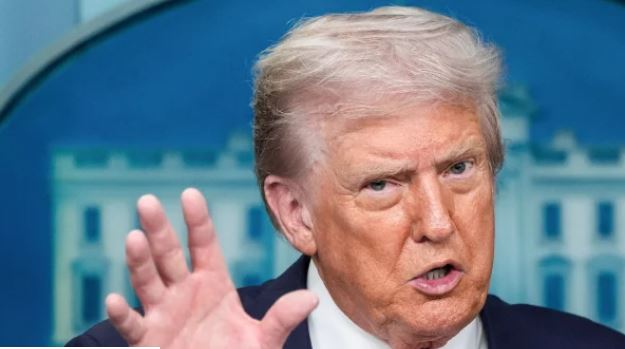 US President Donald Trump
US President Donald Trump
Last week, the United States administration reintroduced Trump-era tariffs in a bold, yet controversial attempt to protect American industries.
Though the headline target is China, the ripple effects of this decision are global and for Africa, particularly East Africa, the message is unavoidable: the continent must recalibrate its economic alliances. The days when African nations could afford to rely on Washington as a stable and strategic partner are over.
For decades, African governments have looked to the US for partnership and support. Programmes like the African Growth and Opportunity Act (Agoa), the President’s Emergency Plan for AIDS Relief (Pepfar) and other bilateral arrangements suggested that Washington saw the continent as more than just a source of raw materials or a geopolitical footnote.
For Kenya, Agoa opened the door to textile exports, helping to nurture industrial parks in places like Athi River and Export Processing Zones that employed thousands. But today, these very industries are under threat from an America that seems more committed to economic protectionism than shared growth.
The fate of Agoa – which is set to
expire next month – remains unknown, and Pepfar’s future is equally unclear.
Kenya is a clear example. The country has invested heavily in aligning with Western trade protocols and investing in export-oriented industries. But when tariffs increase global input costs or shift trade flows away from developing markets, Kenyan manufacturers are left holding the short end of the stick.
The price of raw materials from Asia goes up; access to Western markets becomes more restrictive; and yet the developing economies themselves are blamed for "not being competitive." This double standard is unsustainable.
Moreover, the issue is not just about tariffs. It’s about Washington’s increasingly unreliable posture toward Africa. Every new administration seems to come with a new Africa policy – often contradictory to the last.
One government will champion human rights and democracy; the next will cut aid budgets and focus inward. One will push free trade agreements; the next will impose sanctions. For nations like Uganda, Tanzania and Ethiopia – where long-term infrastructure planning is essential – this kind of instability renders US commitments questionable.
This inconsistency stands in contrast to China’s approach. While critics in the West have often mischaracterised China’s presence in Africa, the reality on the ground is more nuanced and constructive.
In Kenya, the Standard Gauge Railway has significantly cut transportation costs and boosted inter-regional commerce. Chinese firms have built roads, bridges, hospitals and digital infrastructure across the continent – stepping in to meet development needs in areas where other global players have often hesitated.
More importantly, Beijing has offered African governments a consistent, long-term engagement strategy.
It doesn't shift dramatically with election cycles or partisan debates. China's Belt and Road Initiative, while ambitious, provides African states with a vision for regional and global connectivity. By comparison, the US approach feels short-term, reactive and increasingly inward-looking.
None of this is to say that African nations should align with any one partner uncritically. Over reliance on a single power – whether it’s Beijing, Brussels, or Washington – is a geopolitical vulnerability. But the lesson is clear: diversification is survival. Africa, and particularly East Africa, must expand its trade and investment horizons, both within the continent and beyond.
The African Continental Free Trade Area (AfCFTA) offers a bold and timely solution. By eliminating tariffs among African countries and harmonising trade regulations, AfCFTA has the potential to create the largest single market in the world.
For East Africa, this means Nairobi could be exporting to Lagos, Kigali to Accra, without needing approval – or validation – from foreign partners. It means a shift from exporting raw coffee beans to Europe toward value-added processing within the continent.
Alongside this, African countries must double down on building self-reliant industries. That means investing in education, infrastructure, digital skills, and homegrown manufacturing.
Kenya’s digital economy is already showing promise, with Nairobi emerging as a tech hub. Initiatives like Mpesa have demonstrated how African ingenuity can leapfrog traditional development models—and succeed without relying heavily on Western systems.
At the same time, Africa must build stronger partnerships with emerging powers like India, Turkey and Southeast Asian nations.
These countries offer complementary technologies, less conditional diplomacy and a willingness to co-develop with African innovators. Kenya, for instance, has already begun strengthening ties with India through healthcare cooperation and fintech ventures.
What the return of US tariffs last week has made clear is this: Washington is focused inward, its policies often driven by domestic political calculations rather than mutual benefit. Africa must wake up to this reality. The United States may remain an important player – but it is no longer a dependable anchor.
If
East Africa is to rise, it must do so on its own terms: through regional
integration, strategic diversification and pragmatic global partnerships. That
path may still include Washington, but it will no longer revolve around it.
The writer is a Journalist and Communication consultant












